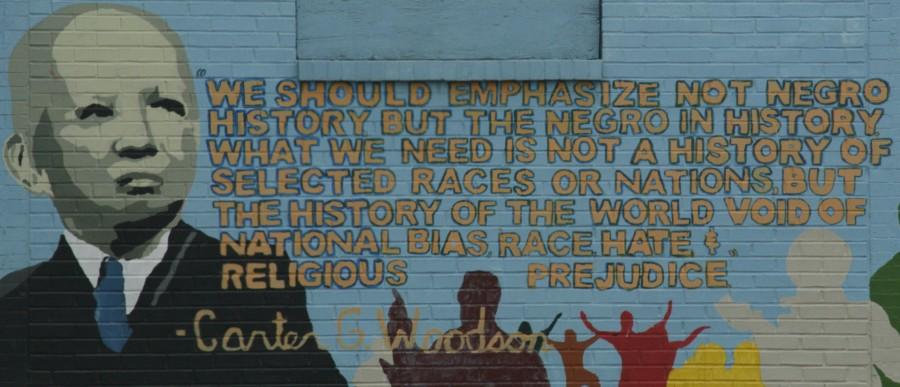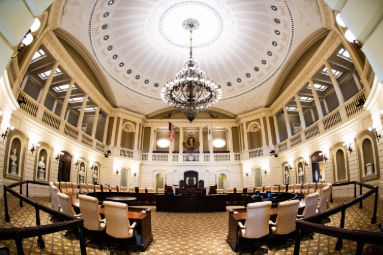The evolution of Black History Month
Near Woodson’s former home in Washington, D.C., local artists painted a mural to remember the founder of Black History Month. Carter G. Woodson, the son of a slave, was one of the first scholars to study African American history.
February 17, 2016
“If a race has no history, it has no worthwhile tradition, it becomes a negligible factor in the thought of the world, and it stands in danger of being exterminated.” This is a quote by the African American historian and founder of Black History Month, Carter G. Woodson. Among the first scholars to study African American history, Woodson cultivated a passion for preserving thousands of historical artifacts and publications. He held a firm belief that African American contributions were overlooked and suppressed by the writers of textbooks and the teachers that used them. In his efforts to change this, Woodson pioneered what is now known as Black History Month.
When Woodson first set out to globalize Black contributions, his first approach was forming the African-American-owned Associated Publishers Press in 1921. He published over a dozen books, including The History of the Negro Church (1921) and his most famous publication, Mis-Education of the Negro (1933). Mis Education of the Negro created a sense of urgency for fundamental change and inspired courses adopted by college institutions. Encouraged by a swell of support, Woodson named the second week of February Black History Week because it coincided with the birthdays of Abraham Lincoln and Frederick Douglass. Black History Week had an overwhelmingly positive response. Schools all over had high demands for African American history courses and clubs. The acknowledgement of black contributions was surging, but it was not until several decades later that students at Kent State University proposed Black History Month. Their proposal was adopted by President Ford in 1976 as part of the bicentennial celebration.
Like all things, Black History Month has evolved since its first appearance in 1976. The most recent change has been catalyzed by a group of activists under the name of Black Lives Matter. Their proposal? Black Future Month. For each day in February, Black Lives Matter and The Huffington Post are collaborating to shed light on cultural and political hardships currently facing African Americans. These issues are displayed through original and thought provoking artwork accompanied by an article by Huffington Post staff reporters. One of these pieces was on liberating black lives through reproductive justice, by Sandra Khalifa. Khalifa expressed this injustice with neon paint strokes on a cardboard surface and a silhouette of a woman looking longingly in the foreground. Gracing the top of the piece in a typewriter font are the words, “being oppressed means the absence of choices.” Though it is critical to recount life-changing history like the Civil Rights Movement, shifting the focus from the past to the present allows for immediate political action to be taken.
Just 200 years ago, blacks were the victims of slavery and were not even considered American citizens. Today, we have a black president. These achievements are worthy of celebration because they are an accomplishment for all of mankind.











